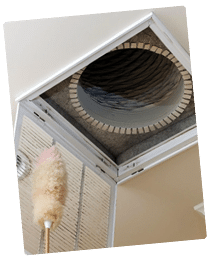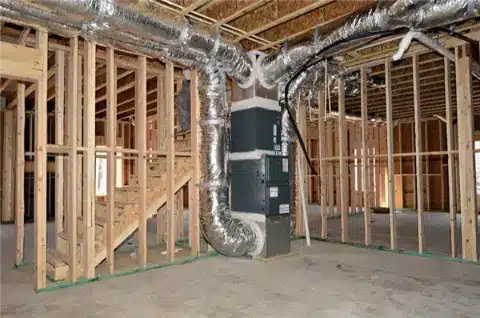Hey there, Kissimmee homeowners! Let’s talk about something that keeps your home comfortable year-round. You might not think about them often, but the ducting systems in your home play a huge role in your comfort and energy bills. Today, we’re diving into the world of flexible air ducts that can transform your HVAC system’s efficiency while saving you money.
Understanding Flexible Air Ducts and Their Benefits
Flexible air ducts offer amazing advantages for homeowners looking to upgrade their HVAC setup. Unlike rigid options, these soft-walled tubes can navigate through tight spaces and around obstacles with ease. This makes them perfect for older homes or buildings with unusual layouts.
The insulated versions help maintain consistent temperatures throughout your home, reducing energy waste and lowering those monthly bills. They’re also much quieter than traditional metal systems, cutting down on that annoying whooshing sound when your system kicks on. Plus, the installation process is typically faster and less expensive, making them a smart choice for budget-conscious homeowners.
Comparing Flexible Ducting vs. Rigid Ventilation Systems
When choosing between flexible air ducts and rigid ventilation options, several factors come into play. Rigid systems last longer, sometimes up to 20+ years, while the soft-walled alternatives typically need replacement after 10-15 years. However, the cost difference can be significant.
The bendable options are about 30% cheaper to install because they require fewer materials and less labor time. They’re also much easier to replace when the time comes. Rigid systems provide better airflow efficiency when properly installed, but their installation requires more planning and can be challenging in existing structures. For most residential applications, the versatile nature of flexible air ducts makes them the practical choice for many Kissimmee homes.
Key Components of a Flex Duct Connector
Every quality flexible air duct system relies on proper connectors to function effectively. Here are the essential parts that ensure your system works at its best:
- Metal collar attachments that connect to your main HVAC unit
- Insulation wrapping to prevent energy loss and condensation
- Vapor barrier outer layer for moisture protection
- Reinforced wire coils that maintain shape while allowing flexibility
- Sealing materials like mastic or specialized tape for airtight connections
The quality of these components directly impacts your system’s efficiency and lifespan. Always check that each connection point is properly sealed to prevent costly leaks.
HVAC Flex Duct Installation Guide
Installing flexible air ducts requires careful planning to ensure optimal airflow. First, measure your space accurately and purchase about 10% more material than calculated to account for bends and connections. Keep runs as short and straight as possible to maintain airflow efficiency.
Support your ducting every 4-5 feet to prevent sagging, which can reduce airflow by up to 30%. When making turns, use gentle curves rather than sharp angles, aiming for a turning radius at least equal to the diameter of the tube. This simple technique can significantly improve your system’s performance and extend its lifespan. Always seal joints thoroughly with approved materials to prevent air leaks.
Proper Installation of Flexible Hose Systems
The way you install your bendable ventilation makes a huge difference in performance. Avoid stretching the material too tight, as this can damage the internal structure and reduce airflow. Instead, allow a natural curve with proper support underneath.
When connecting to registers or main trunks, ensure a secure fit with approved fasteners and sealing materials. Properly installed systems should have minimal airflow resistance while maintaining structural integrity. This balance is key to achieving energy efficiency and comfort throughout your home. Remember, proper installation today prevents costly repairs tomorrow.
Why Choose Flexible Air Ducts for Your Ventilation Needs
For Kissimmee homeowners, flexible air ducts offer practical solutions to common HVAC challenges. Our humid climate means moisture management is crucial, and quality insulated systems help prevent condensation issues that can lead to mold growth.
These adaptable systems work beautifully with both older and newer HVAC equipment. They’re also easier to clean, which is important for maintaining indoor air quality. When properly installed and maintained, flexible air ducts provide reliable comfort while adapting to your home’s unique layout. If you’re considering an HVAC update, our local team can help you choose the right materials and design for your specific needs, ensuring comfort for years to come.
Request A Service


Breathe easier with our professional, commercial, and residential air duct cleaning services in Kissimmee, FL. We remove dust, allergens, and debris from your ductwork to improve indoor air quality and HVAC efficiency. Whether for your home or business, our thorough cleaning process helps create a healthier, more comfortable environment. Trust us for clean, fresh airflow.

FAQ
How much does it cost to install flexible air ducts in an average home?
For a typical Kissimmee home, flexible air duct installation costs between $1,500-$3,000 depending on your square footage and system complexity. This includes materials and professional labor. You’ll save approximately 30% compared to rigid ducting, with most homeowners recouping costs through improved energy efficiency within 2-3 years.
How often should flexible air ducts be cleaned or replaced?
Professional cleaning is recommended every 3-5 years for flexible air ducts, with more frequent cleanings if you have pets or allergies. Most quality systems last 10-15 years before replacement becomes necessary. Regular maintenance extends lifespan and improves indoor air quality while preventing potential mold issues common in our humid climate.
What are signs that my flexible air ducts need to be replaced?
Watch for uneven temperatures between rooms, increased energy bills, excessive dust, moldy smells, or visible sagging in exposed ductwork. Squealing or rattling sounds when your system runs also indicate problems. If your flexible air ducts are over 12 years old and showing these symptoms, replacement is likely more cost-effective than repairs.
